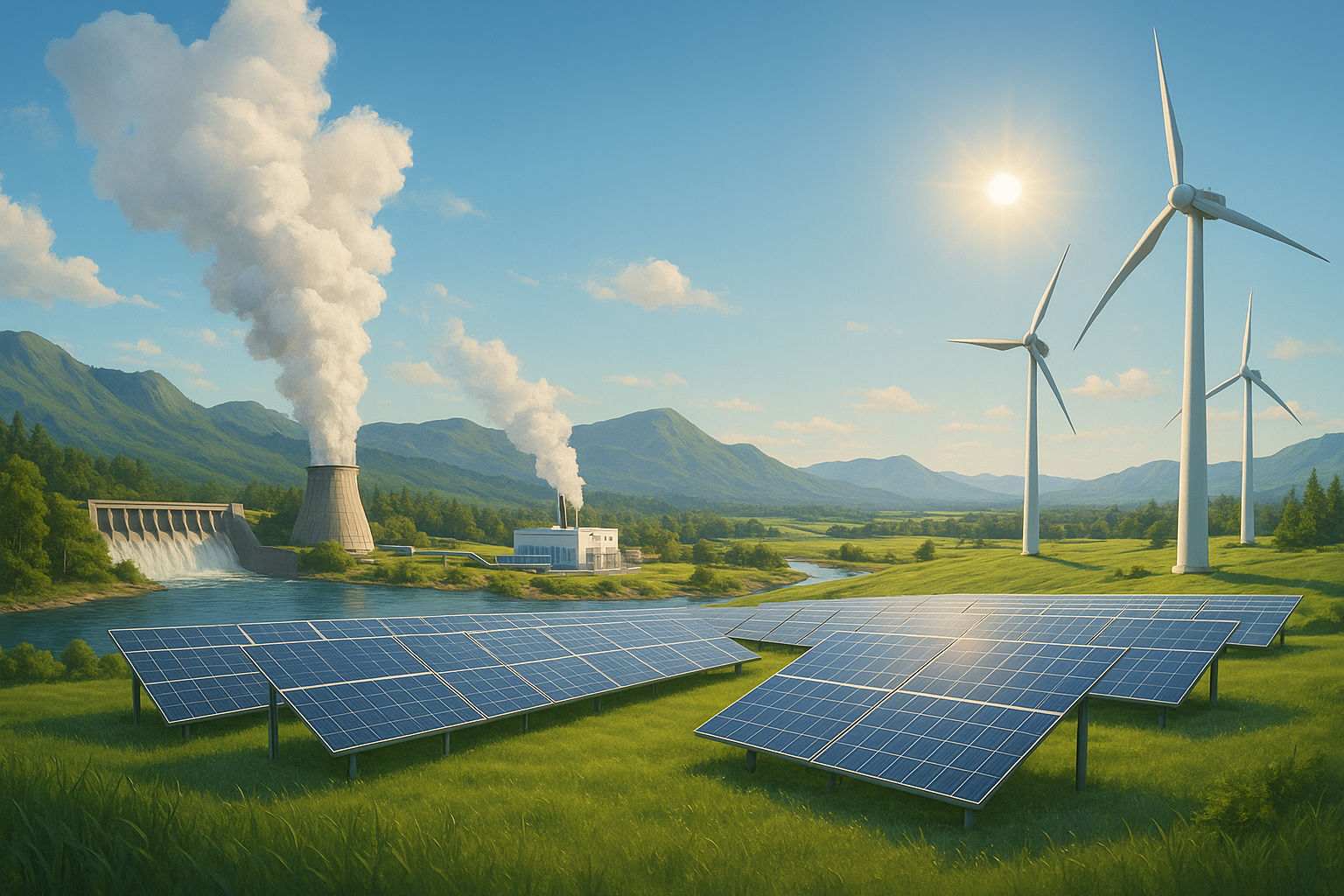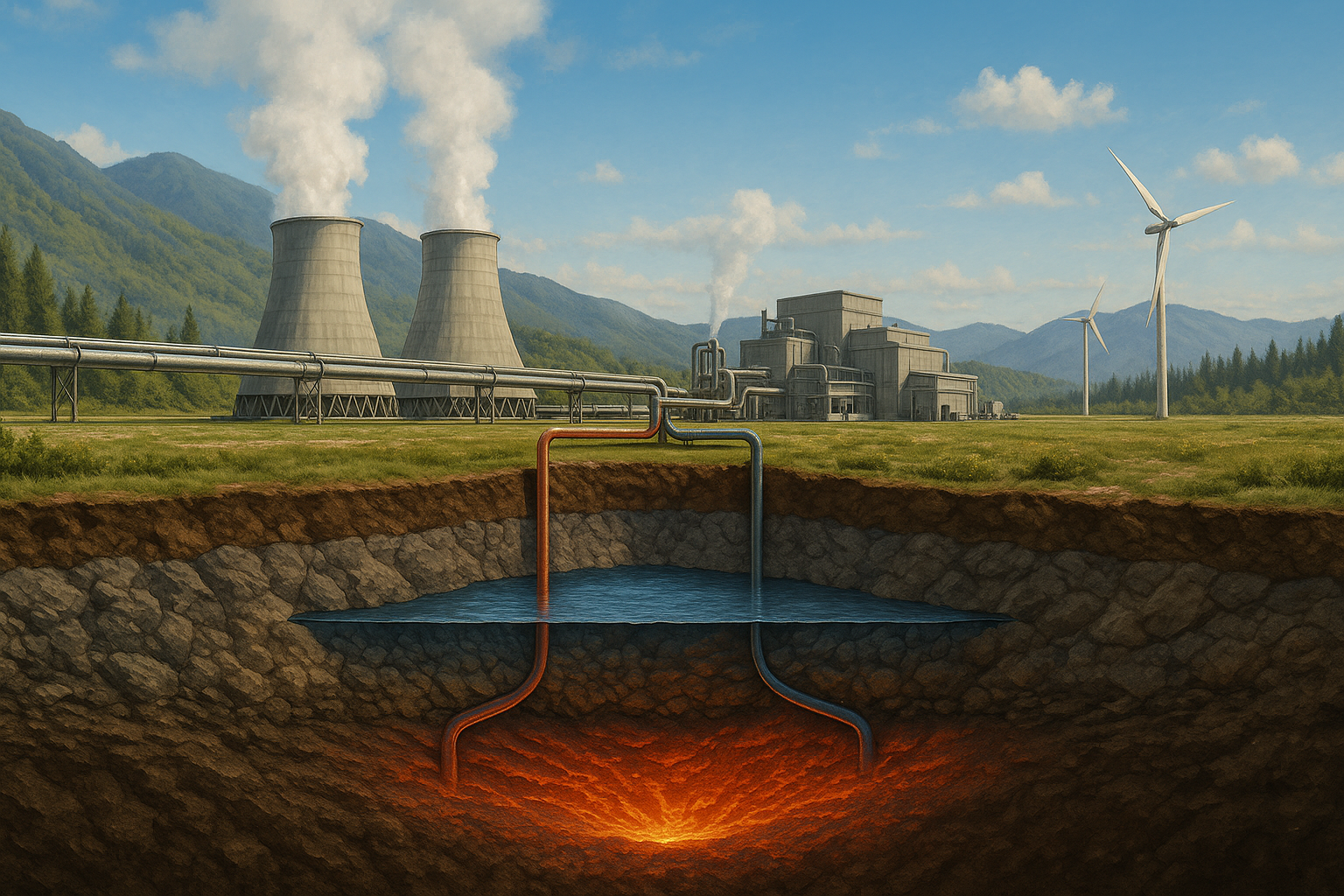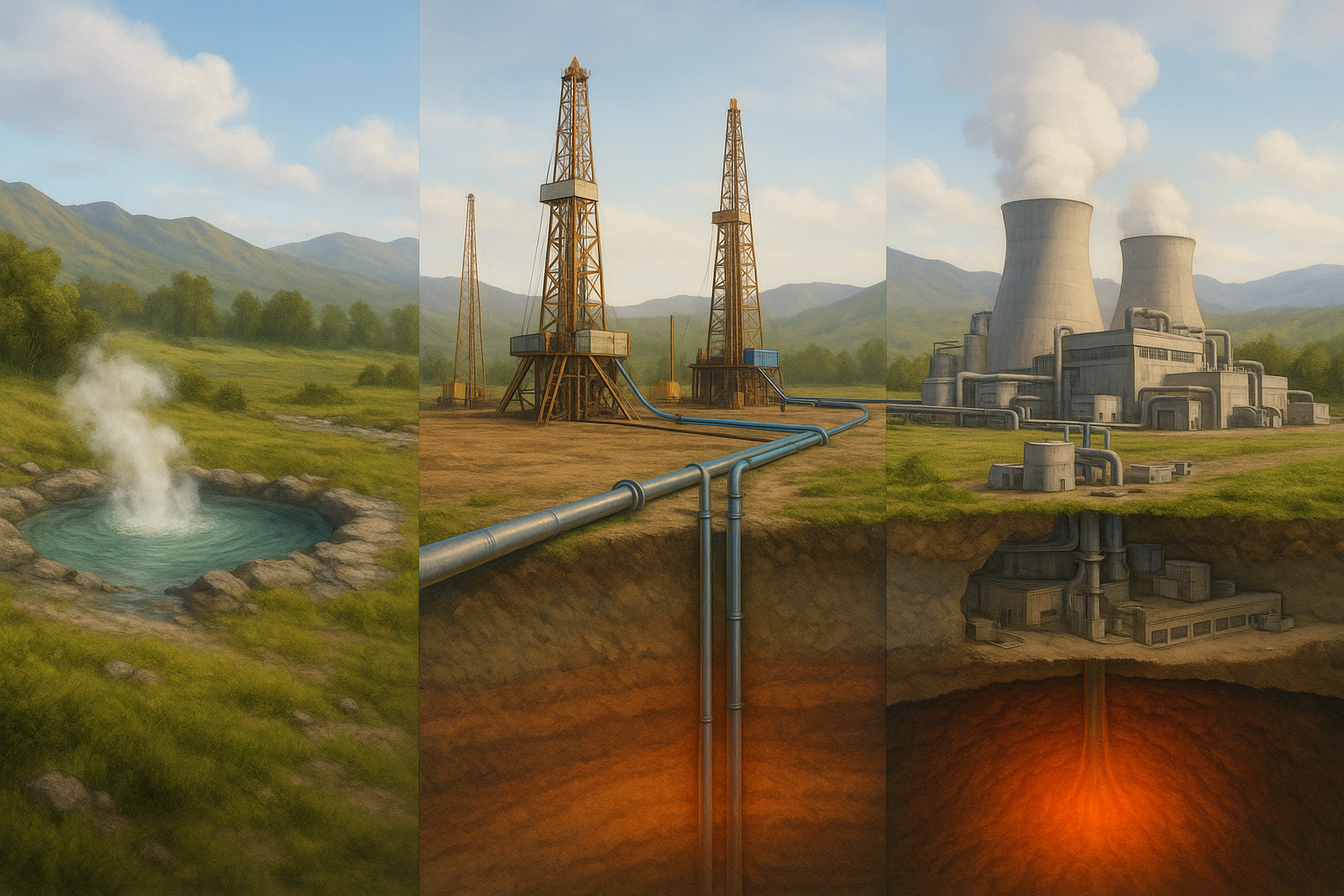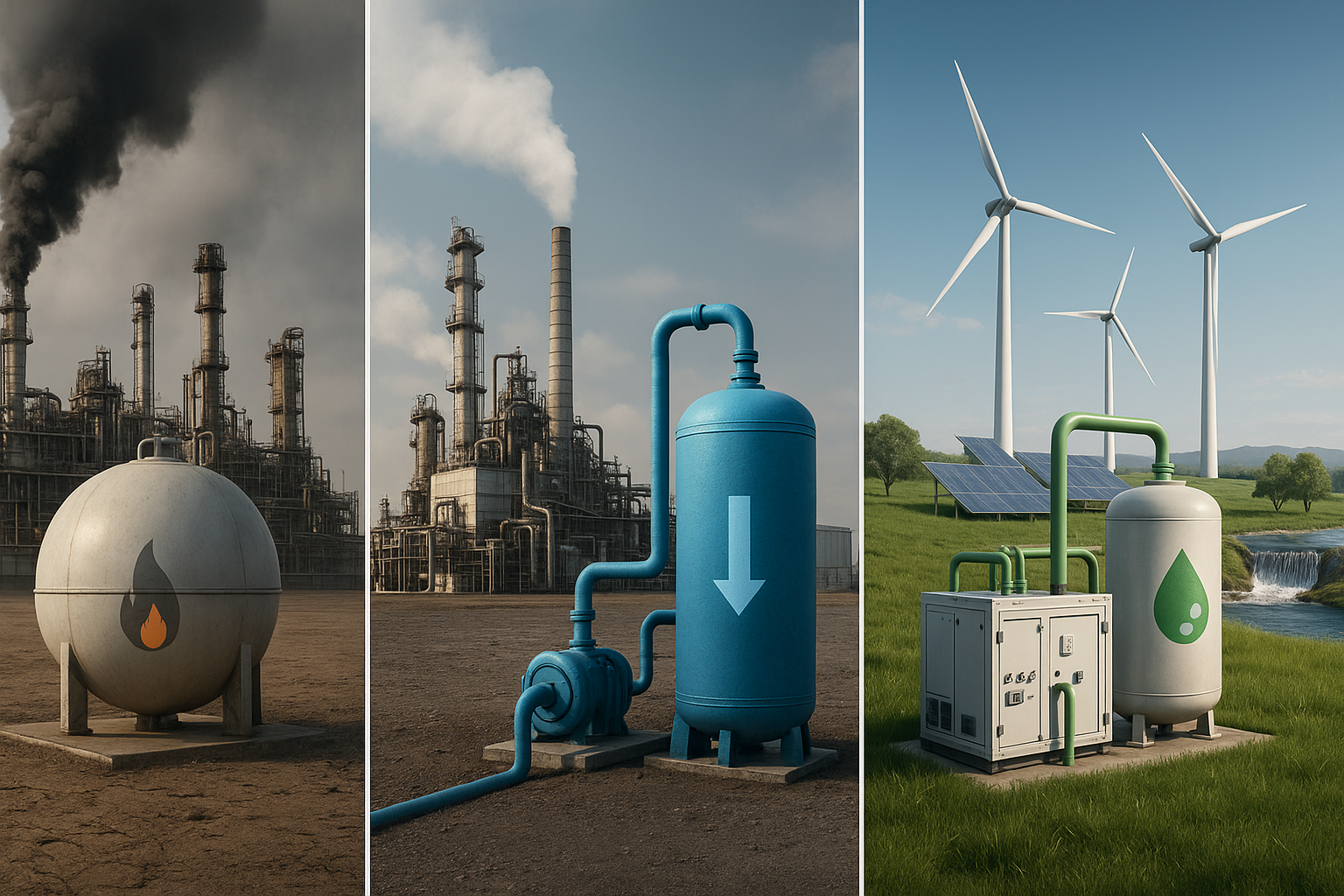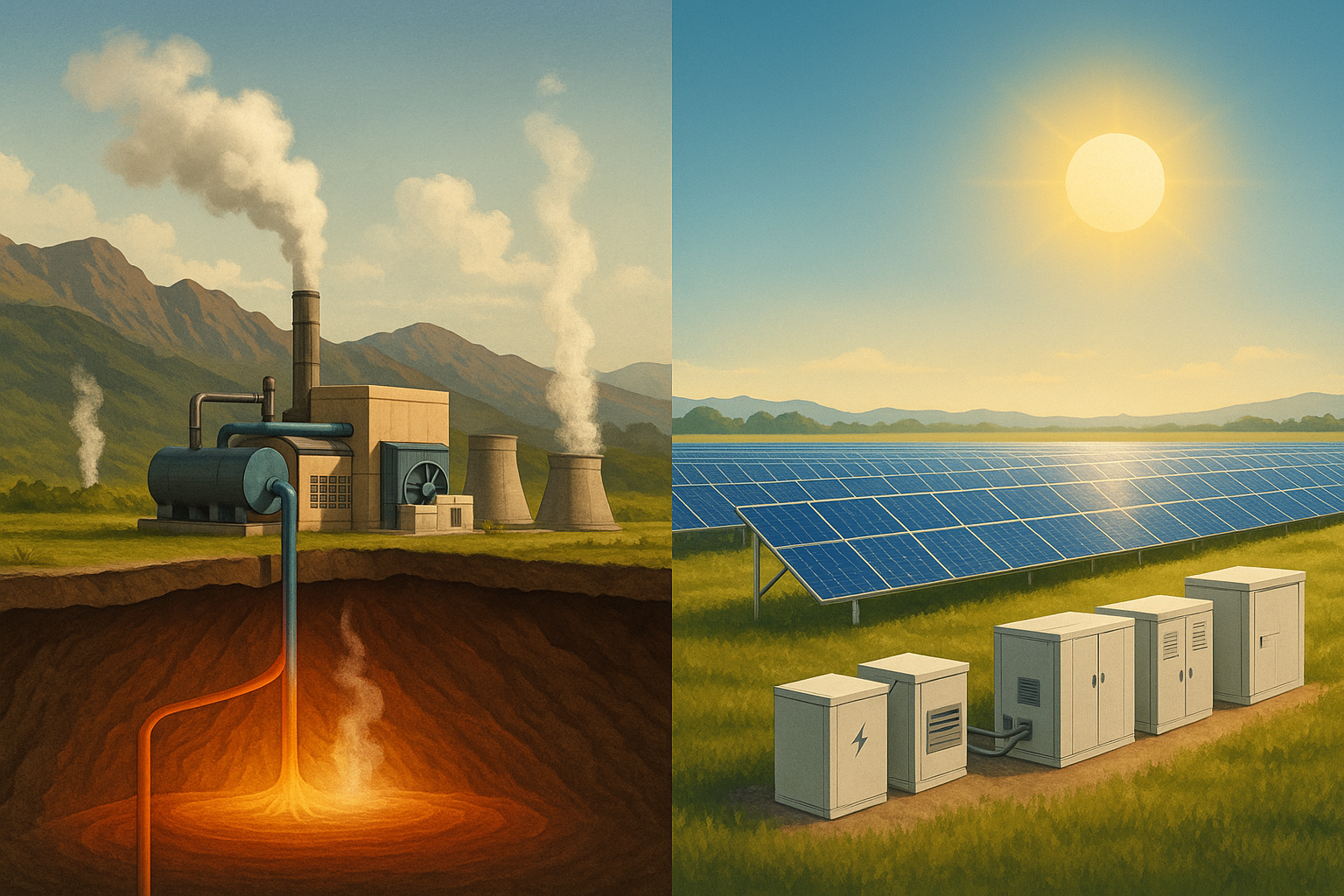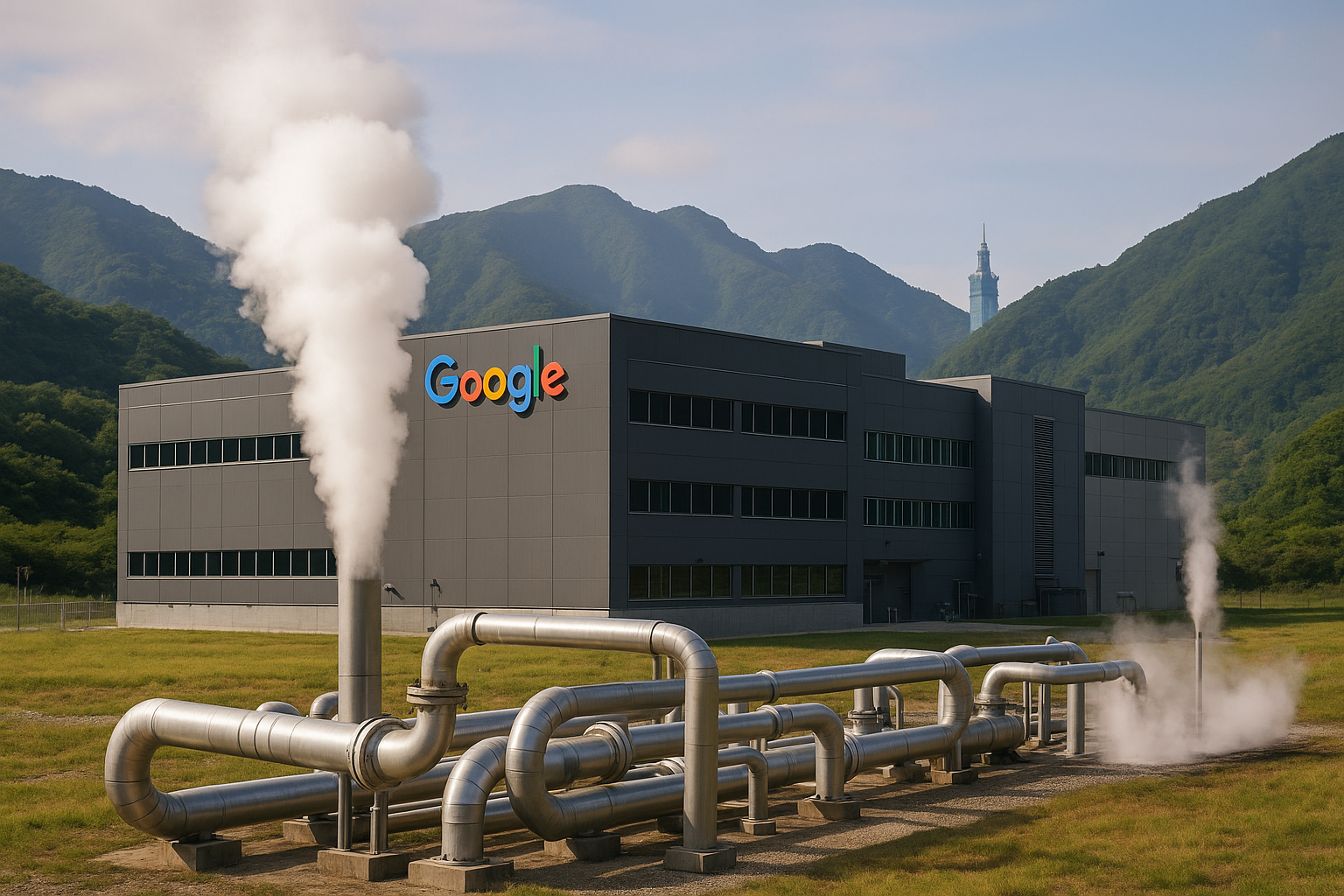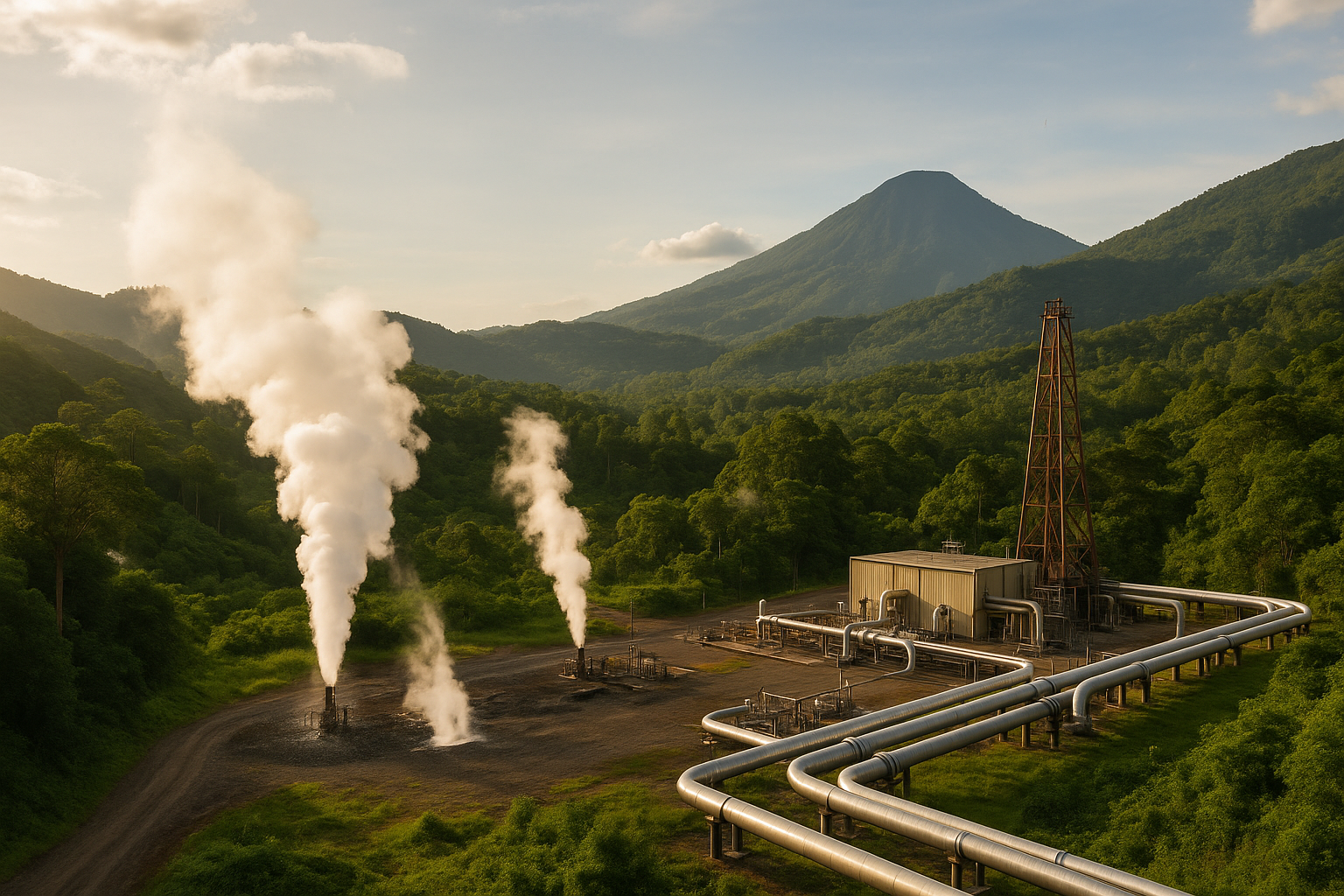Renewable energy is power derived from natural processes that are replenished continuously. Sunlight, wind, flowing water, plant matter, and underground heat are all sources that “never run out” within a human lifetime and produce far fewer greenhouse‑gas emissions than fossil fuels.
Main Renewable‑Energy Sources
1. Solar
Photovoltaic (PV) cells convert sunlight into direct‑current electricity, which is then inverted to alternating current for everyday use. Solar works best in sunny regions and can be mounted easily on rooftops.
2. Wind
Wind turbines harness moving air; the rotating blades drive a generator to produce electricity. Coastal areas and open plains with steady winds are ideal locations.
3. Hydropower
Water flowing through dams or penstocks turns turbines, producing mechanical energy that is converted into electricity. Adequate water flow and elevation differences are essential.
4. Geothermal
High‑temperature water or steam extracted from underground reservoirs spins a steam turbine, generating electricity around the clock and stabilizing green power grids.
5. Biomass / Biogas
Plant residues, wood, or organic waste are burned or digested to release gas that can produce heat and electricity while simultaneously helping to manage waste.
Why Is Renewable Energy Important?
- Lower greenhouse gases – These sources emit far less CO₂ than coal, oil, or natural gas.
- Energy security – Nations rich in sunlight, wind, or geothermal potential can generate their own power and cut fuel imports.
- Falling costs – Solar‑cell and wind‑turbine technologies grow cheaper every year, making them increasingly competitive with fossil electricity.
Challenges to Address
- Variability – Solar and wind output fluctuates with the weather, so batteries or complementary power systems are needed to keep supply steady.
- Land use – Large wind or solar farms require significant space, while hydropower needs suitable topography.
- Grid integration – Transmission lines and control systems must adapt to handle multiple, decentralized power inputs reliably.
Renewable Energy and Green Hydrogen
Electricity from the sun, wind, or geothermal heat can power electrolysis, splitting water into hydrogen and oxygen without emitting CO₂. The resulting “green hydrogen” serves as a clean fuel for industry or can be reconverted into electricity, making renewables a cornerstone of a carbon‑free energy future.
Conclusion
Renewable energy is central to curbing global warming, strengthening energy security, and paving the way for sustainable green‑hydrogen production. With the right investments in technology and infrastructure, today marks the starting point of a cleaner energy future for everyone.
Ask ChatGPT

